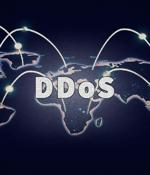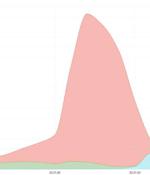Security News

DDoS attacks are an underappreciated residual risk for most organizations today. While most people are concerned about ransomware, it typically takes a ransomware attacks months to develop, whereas DDoS attacks are very sudden and may result in a complete business outage.

Cloudflare is reporting a large DDoS attack against an unnamed company "Operating a crypto launchpad.". While this isn't the largest application-layer attack we've seen, it is the largest we've seen over HTTPS. HTTPS DDoS attacks are more expensive in terms of required computational resources because of the higher cost of establishing a secure TLS encrypted connection.

A DDoS attack works by several machines repeatedly flooding servers of a website with excessive requests in a short span of time, such that the servers run out of their allotted bandwidth, and become unresponsive. More recently, Russian hacktivist group "Killnet" has launched DDoS attacks on Romanian government sites.

A DDoS attack works by several machines repeatedly flooding servers of a website with excessive requests in a short span of time, such that the servers run out of their allotted bandwidth, and become unresponsive. Conducting DDoS attacks is a criminal offense in most jurisdictions.

More recently, Russian hacktivist group "Killnet" has launched DDoS attacks on Romanian government sites. Conducting DDoS attacks is a criminal offense in most jurisdictions.

The Romanian national cyber security and incident response team, DNSC, has issued a statement about a series of distributed denial-of-service attacks targeting several public websites managed by the state entities. DNSC is now collaborating with other authorities in the country to map these attacks and mitigate their effect.

Ukraine's computer emergency response team has published an announcement warning of ongoing DDoS attacks targeting pro-Ukraine sites and the government web portal. The threat actors, who at this time remain unknown, are compromising WordPress sites and injecting malicious JavaScript code to perform the attacks.

At 15.3 million requests-per-second, the DDoS bombardment was one of the largest that the internet infrastructure company has seen, and the largest HTTPS attack on record. Other countries generating the most traffic included Russia, Brazil, India, Colombia and the US. Cloudflare researchers didn't name the botnet but said it was one that they've been watching and had seen attacks as large as 10 million rps that matched the same fingerprint.

Cloudflare on Wednesday disclosed that it acted to mitigate a 15.3 million request-per-second distributed denial-of-service attack. "HTTPS DDoS attacks are more expensive in terms of required computational resources because of the higher cost of establishing a secure TLS encrypted connection," Cloudflare's Omer Yoachimik and Julien Desgats said.

Comcast Business published results from a report which provides an overview of the distributed denial of service (DDoS) attack landscape, trends experienced by its customers and insights for measuring and mitigating risks. The report indicates that 2021 was another record year for DDoS attacks, as Comcast Business DDoS Mitigation Services identified and helped defend 24,845 multi-vector attacks targeting Layers 3,4, and 7 simultaneously.